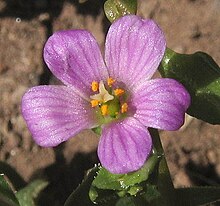피보티스
Phi Boötis| 관측 데이터 Epoch J2000.0 이쿼녹스 J2000.0(ICRS) | |
|---|---|
| 별자리 | 보에테스 |
| 우측 상승 | 15h 37m 49.59790s[1] |
| 탈위임 | +40° 21′ 12.3635″[1] |
| 겉보기 크기 (V) | +5.24[2] |
| 특성. | |
| 스펙트럼형 | G7 III-IV Fe-2[3] |
| U-B색지수 | +0.53[2] |
| B-V색지수 | +0.88[2] |
| 아스트로메트리 | |
| 방사 속도 (Rv) | -10.62±0.30km[4]/s |
| 고유 운동 (μ) | RA: +61.23[1]mas/yr Dec.: +60.09[1]mas/yr |
| 시차 (π) | 19.22 ± 0.24[1] 마스 |
| 거리 | 170 ± 2 리 (52.0 ± 0.6pc) |
| 절대치수 (MV) | +1.67[5] |
| 세부 사항 | |
| 미사 | 1.43[5] M☉ |
| 반지름 | 5[4] R☉ |
| 루미도 | 17[4] L☉ |
| 표면 중력 (log g) | 2.82±0.14[6] cgs |
| 온도 | 4,945±57[6] K |
| 금속성 [Fe/H] | −0.51±0.06[6] 덱스를 만들다 |
| 회전 속도 (v sin i) | 0.0km[4]/s |
| 나이 | 3.16[5] Gyr |
| 기타 지정 | |
| 데이터베이스 참조 | |
| 심바드 | 자료 |
피보티스(Phi Boötis, φ Boötis)는 북부 보에테스 별자리에 있는 단일 [8]황후 별이다.육안으로는 +5.24의 외관상 시야가 희미하게 보인다.[2]지구에서 볼 수 있는 19.22마스의 연간 시차 변화를 바탕으로 태양으로부터 170광년 떨어진 곳에 위치해 있다.[1]그 거리에서는 성간 먼지로 인해 0.09의 소멸로 시각적 크기가 감소한다.[5]그것은 -10.6 km/s의 방사형 속도로 태양 가까이 이동하고 있다.[4]
Phi Boötis의 별 분류는 G7 III-IV Fe-2로,[3] 이것은 그것이 아지구성과 거성의 스펙트럼 특성을 모두 보여주는 진화하는 G형 항성임을 시사한다.그러나 앨브스(2000년)는 이른바 '붉은 덩어리'의 일원으로 등재돼 있어 중심부에서 헬륨 융합을 통해 에너지를 발생시키고 있는 노후한 거성임을 알 수 있다.[9]그 등급의 'Fe-2' 접미사 표기법은 그 스펙트럼에 철이 상당히 부족하다는 것을 의미한다.약 30억년 된 [5]Phi Boötis는 태양 질량의 1[5].43배, 태양 반지름의 5배로[4] 추정된다.그것은 약 4,945 K의 유효 온도로 태양의 광권으로부터 태양 광도의 17배를[4] 방출하고 있다.[6]
참조
- ^ a b c d e f van Leeuwen, F. (2007), "Validation of the new Hipparcos reduction", Astronomy and Astrophysics, 474 (2): 653–664, arXiv:0708.1752, Bibcode:2007A&A...474..653V, doi:10.1051/0004-6361:20078357, S2CID 18759600.
- ^ a b c d Johnson, H. L.; et al. (1966), "UBVRIJKL photometry of the bright stars", Communications of the Lunar and Planetary Laboratory, 4 (99): 99, Bibcode:1966CoLPL...4...99J.
- ^ a b Keenan, Philip C.; McNeil, Raymond C. (1989), "The Perkins catalog of revised MK types for the cooler stars", The Astrophysical Journal Supplement Series, 71: 245, Bibcode:1989ApJS...71..245K, doi:10.1086/191373.
- ^ a b c d e f g Massarotti, Alessandro; et al. (January 2008), "Rotational and Radial Velocities for a Sample of 761 HIPPARCOS Giants and the Role of Binarity", The Astronomical Journal, 135 (1): 209–231, Bibcode:2008AJ....135..209M, doi:10.1088/0004-6256/135/1/209.
- ^ a b c d e f Takeda, Yoichi; et al. (August 2008), "Stellar Parameters and Elemental Abundances of Late-G Giants", Publications of the Astronomical Society of Japan, 60 (4): 781–802, arXiv:0805.2434, Bibcode:2008PASJ...60..781T, doi:10.1093/pasj/60.4.781, S2CID 16258166.
- ^ a b c d Prugniel, Ph.; et al. (2011), "The atmospheric parameters and spectral interpolator for the MILES stars", Astronomy & Astrophysics, 531: A165, arXiv:1104.4952, Bibcode:2011A&A...531A.165P, doi:10.1051/0004-6361/201116769, S2CID 54940439.
- ^ "phi Boo". SIMBAD. Centre de données astronomiques de Strasbourg. Retrieved 2017-09-09.
- ^ Eggleton, P. P.; Tokovinin, A. A. (September 2008), "A catalogue of multiplicity among bright stellar systems", Monthly Notices of the Royal Astronomical Society, 389 (2): 869–879, arXiv:0806.2878, Bibcode:2008MNRAS.389..869E, doi:10.1111/j.1365-2966.2008.13596.x, S2CID 14878976.
- ^ Alves, David R. (August 2000), "K-Band Calibration of the Red Clump Luminosity", The Astrophysical Journal, 539 (2): 732–741, arXiv:astro-ph/0003329, Bibcode:2000ApJ...539..732A, doi:10.1086/309278, S2CID 16673121.


